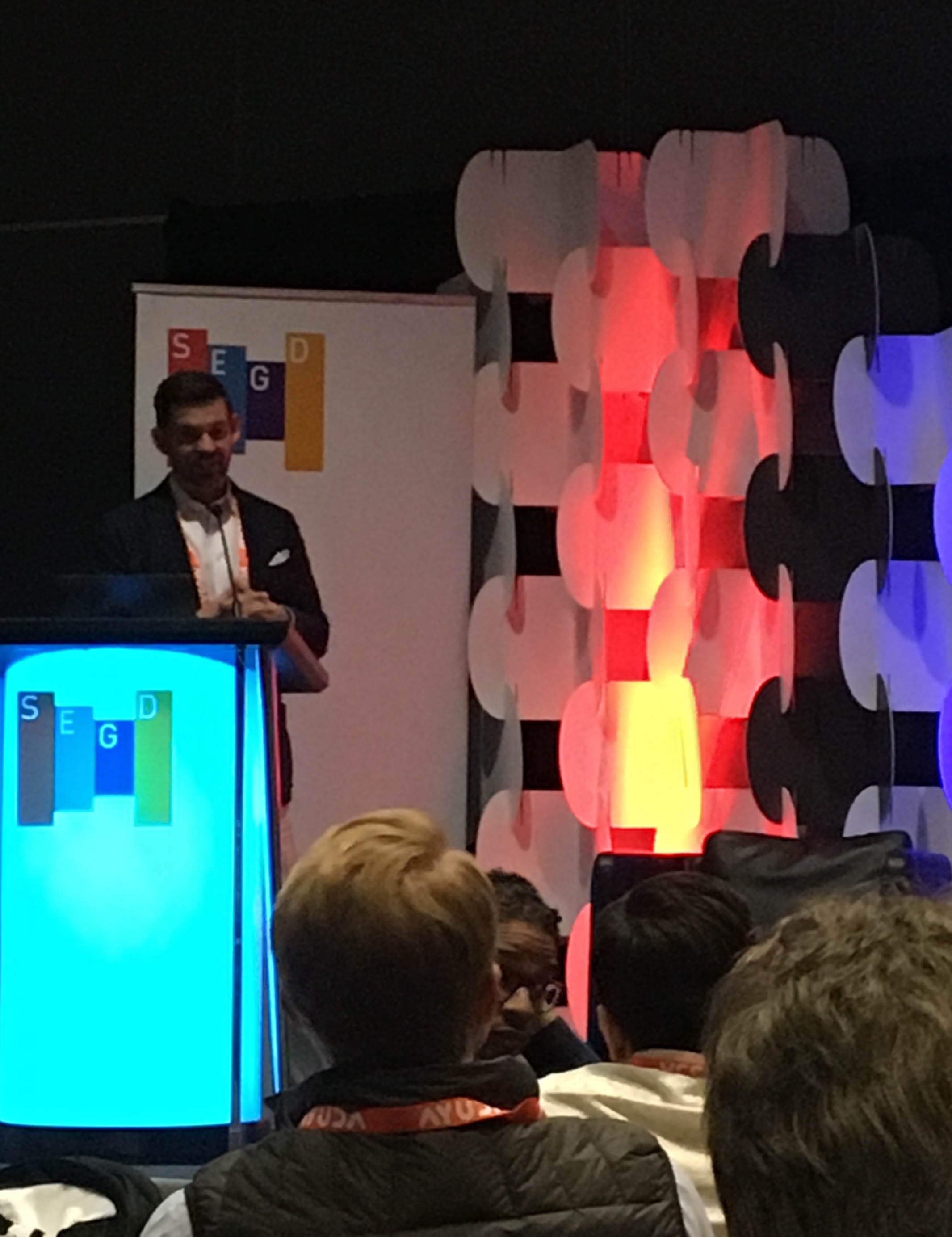AV UX: Creating Brand Experiences


At the Society of Experiential Graphic Design (SEGD)’s Branded Environments during the Digital Signage Expo (DSE) in Las Vegas, NV, Justin Wood of Dimensional Innovations discussed extending the brand experience in sports.
Here’s quick recap of his thoughts, broken down into four different categories one should consider with the audiovisual user experience (UX).
1. Experiential
“The days of sponsors being okay with that [just a logo] as their brand recognition—those days are over,” Wood said. “They need to be experiential. Whatever we do in the space needs to support the brand, it needs to support the team, and ideally, they’re in really, really close alignment.” Experiences need to have a wow factor so people stop and spend time there, which brings values to the fans and the sponsoring company.
As an example, he pointed to the Pittsburgh Penguins hockey team, and credits the success of their sponsorship program to the alignment of the company’s sales team in putting the right brand sponsors with the right activation. For example, aligning the Blue Cross Blue Shield with the Kids’ Zone when the company had “really deep roots” with amateur hockey leagues in the area, or connecting their hall of fame with a media conglomerate that was able to help with hall of fame members.
“Everything was in alignment, everything made sense,” he said. “Nobody ever had a head-scratcher like ‘Why was that brand here in this space, or vice versa?’”
2. Physical
A daily selection of the top stories for AV integrators, resellers and consultants. Sign up below.
“We like to think that our stuff is the most important, but it’s absolutely not the most important,” Wood said. “The most important thing is the fans find their seats, they can find restroom, they can get to the concessions—the kinds of things that are the basic level of fan experience, and our stuff shouldn’t impede that.”
Wood advised attendees to ensure the AV UX is being additive and not a distraction. “We’ve all seen experiences out there that are a distraction. They become a visual noise along and on top of the signage, the wayfinding, the concessions, the other stuff that happens in the space, and all of the sudden it becomes this visual noise that we can’t get through.”
3. Visual
The goal of the project should be to make an entire area work together as one holistic system instead of a series of random sponsor activations. For Wood, the design process has to include a constant balance ensuring “the architecture, the design, and the sponsorship spaces all sing together.” For example, wayfinding, lighting, and artwork need to work in concert with the concession and retail design.
4. Sponsorship
Sponsorship can be the trickiest part of designing the experience. Some people have worked on similar projects and have a strong vision, while others haven’t done a major activation and don’t even know where to begin—and there’s often a steep learning curve, even with a brand-savvy company.
Wood frequently has to remind sponsors that “their space is not going to keep this stadium from opening, so you got to stay on path, got to stay on target.” Hitting those deadlines is crucial.
“The design process is a very iterative process to help them make sure we’re hitting all of the goals but also make sure we’re staying within budget, and can actually build what we’re going to build,” Wood said.
Megan A. Dutta is a pro AV industry journalist, and the former content director for Systems Contractor News (SCN) and Digital Signage Magazine, both Future U.S. publications. Dutta previously served as the marketing communications manager at Peerless-AV, where she led the company’s marketing and communications department. Dutta is the recipient of AVIXA's 2017 Young AV Professional Award and Women in Consumer Technology's 2018 Woman to Watch Award. Dutta is co-founder of Women of Digital Signage, an organization designed to provide a pathway to promote networking, mentoring, and personal growth.

